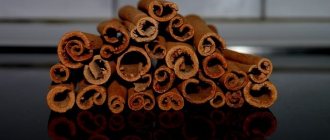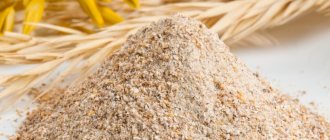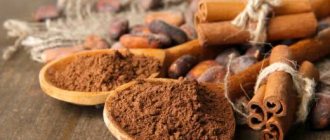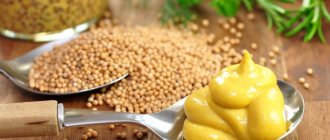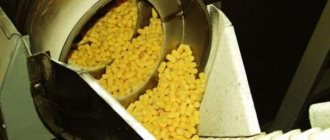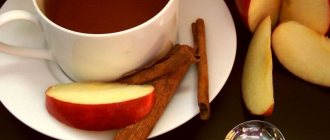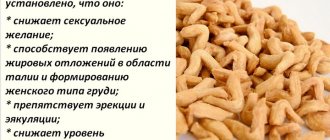What is this
Bees collect nectar from plants, flowers, and trees. Mainly it is pollen. Honeydew is a natural secretion of insects that live on plant leaves. This concept includes a sticky substance that forms due to temperature changes on plants - another name is honeydew.
It is from this substance that honey is obtained.
Appearance and composition
Traditionally, large quantities are brought from the Caucasus. This is because the region often experiences dry summers with few honey plants, and the abundant fruit trees there provide an excellent source of honeydew.
Surprisingly, this type of honey is considered second-class, although experts currently have differing opinions on this issue. Actually, who likes what, although it has plenty of useful properties.
To taste, honeydew sweetness is like honey with a hint of bitterness. Sometimes you can feel the presence of malt in honey. It is dark in color, ranging from almost black to brown. If the product is collected from pine honeydew, it has a light green tint.
Ingredients:
- sugars (inverted) – 65%;
- proteins;
- fructose;
- nitrogenous components;
- minerals;
- amino acids;
- dextrin;
- melitoses;
- lipids.
How to recognize natural honey
Bee products are often counterfeited, so consumers must be able to distinguish real honey from artificial substitutes. Pure honeydew honey is considered rare. Its characteristic difference is the complete absence of odor. The main feature is the dark color and thick layer of substance above the sediment. The product from honeydew collected in deciduous forests is almost black and has a dark brown color with a green tint. If the forest is dominated by conifers, the color will be brown.
Types of honeydew
- Vegetable. It contains sugars: bees collect them from bushes, as well as trees, both fruit and coniferous. Honeydew contains useful ingredients, and they are also secreted by the bees themselves, depositing them in honeycombs. What is it? This is a liquid, sweet in taste, concentrated on trees such as aspen, spruce, fir, larch, pine;
- Animal. If liquid is observed on plants, then it is honeydew. It is created by small insects whose food source is plant flora. During their life, fleas, aphids, and insects secrete salivary secretions that have a high concentration of sugar. These are what the bees collect.
Animal and plant species differ from each other in composition. In particular, the mixture obtained from coniferous trees contains more phosphorus. About 6 times than, for example, from honeydew from deciduous trees. The animal form contains more proteins: for this reason, it spoils faster.
Features of honeydew honey
The color of honey collected from animal honeydew can be reddish-brown, brown, dark (almost black, tar-like) and greenish-brown with yellow streaks. Light is very rare; bees usually produce it in the spring and early summer if there is not enough pollen. The shade depends on the raw material:
- dark colors with a greenish tint/greenish veins are characteristic of honeydew of deciduous plants;
- light brown, greenish, light brown with green and yellow veins, bees collect from the honeydew of coniferous plants;
- honey from mixed plant honeydew turns out dark, tar-like;
- aphid honeydew gives a green tint;
- the honeydew of other insects produces warmer shades and may contain greenish veins.
Honeydew honey is viscous, highly viscous, and very sweet. Bees often prepare combined honey, mixing honeydew and flower honey. Such honey may have the aroma and taste characteristic of flower honey. The degree of expression of honey notes depends on the percentage of pollen in the raw material. When honeydew and pollen are mixed, a liquid substance is obtained. Honey is made from pure honeydew without impurities, has no specific taste or aromatic honey notes, and can sometimes have a faint, unpleasant odor. The aroma comes only from honeydew from coniferous trees. This honey can taste like sugary molasses or malt. Some varieties have an unpleasant bitterness.
Honeydew processed by bees is practically insoluble in water; it forms a lump in the mouth and takes a long time to melt. When honeydew honey is combined with distilled water and 95% ethyl alcohol in a ratio of 1:1:6, the mixture becomes cloudy and a precipitate forms. This property helps to identify it and distinguish it from true honey and sugar fakes. Unlike flower honey, honeydew does not crystallize over time; it turns into a soap-like mass.
Beneficial features
The benefits of honeydew honey are as follows:
- Acceleration in the restoration of bone tissue after injuries;
- Restoration of the cardiovascular system after heart attacks, strokes;
- Increasing immunity, the body's resistance to infections;
- Activation of the digestive system;
- Prevention of anemia;
- Improved skin appearance. The use of honey in creams allows you to fight pathogenic microorganisms that live on the human skin;
- Hair growth, strengthening. Use of the mixture in shampoos.
Many experts say that this substance is the best alternative to dietary supplements. The substances contained in it strengthen the nervous system, increase immunity, and the performance of the human body. Since they have antibacterial properties, all this is very helpful in the treatment of acute respiratory viral infections, acute respiratory infections, and other diseases.
The health benefits will be noticeable, but only if it is consumed correctly.
- Firstly, separately from food. You can add the mixture to tea or compote, but the liquid must be warm.
- Secondly, honeydew honey is taken only in small proportions for diabetes.
Since it does not contain many carbohydrates, it is relatively safe for people with high blood sugar. In addition, the bee product accelerates metabolic processes in the body and removes cholesterol.
About the honey plant
Many people don't realize that bees don't always make honey from nectar. In addition, beekeepers themselves have little information about honeydew honey. Sometimes, having installed bee hives near a coniferous forest, many will not understand why the bee product does not crystallize, while others believe in the myth that bees find honeydew in large insects that live underground - mole crickets.
It is worth knowing that in the summer there are periods of abnormally high temperatures or prolonged absence of rain, leading to drought. Under such weather conditions, honey flowers stop producing nectar or produce it in very small volumes. In this case, bee colonies begin to look for other sources from which to produce honey. Prudent nature solved this problem in an original way - the trees begin to secrete a sweet product on the leaves, which is called honeydew. It can be of not only plant origin, but also animal origin. The plant species is distinguished by such trees as willow, aspen, linden, and some types of conifers - fir, spruce, larch. Honeydew is released under the influence of high temperature, and therefore it is popularly called honeydew.
Small insects also produce a sweet sticky liquid on the leaves - this is animal honeydew. For example, insect species such as aphids and leaf flea beetles produce saliva that contains a lot of sugar, which is what bee colonies collect. In this case, honeydew must contain at least 4% sucrose and volatile aromatic substances in order to interest bees. If these indicators are lower, it will not be suitable for creating honeydew honey. It should be taken into account that bees resort to the method of collecting honeydew in extreme situations, when it is not possible to obtain flower nectar.
Distinctive features
How to distinguish real honeydew honey? You only need to know a couple of nuances so as not to purchase a fake. It is difficult to buy in a regular store. It's better to go to the fair for him.
Its composition and quality are influenced by the following factors:
- types of honeydew and vegetable honeydew in finished products;
- climate features of the area where the trees grow and where the substance was taken from;
- presence of pollen in the substance.
Color varies from dark green to brown, sometimes almost black. In the standard, flowery version, a small part of honeydew can be found: and this is considered the norm. It’s easy to check whether regular honey contains honeydew:
- Take a liter of water for one tablespoon of the substance.
- Mix the liquid and substance, combine with 0.3 pure alcohol.
If the resulting composition is cloudy, then there are signs of the presence of the substance in question. The nectar tastes sweet, with an element of bitterness. The most exquisite is the one collected from coniferous trees. There is no specific smell. The aroma is tart, pleasant, the consistency is thick, sticky, viscous. Does not dissolve in water. The crystallization process is longer when compared with the flower process.
If we talk about what is unusual about honeydew honey, it is the presence of water. Or rather, there is a large amount of it. For this simple reason, it deteriorates faster than flower. Therefore, you need to know how to store it correctly so that it does not spoil before the allotted time.
Areas of use:
- Production of confectionery products. Experts use it because of its sweetness, as well as its consistency: viscous and viscous. Processing the product under thermal conditions is unacceptable.
- Manufacturing of cosmetics. The product is found in creams and masks. This allows you to improve your skin color, even it out, remove the effects of stress, and also fight age-related changes.
- In the pharmaceutical industry. Vitamins and antimicrobial components are extracted from it. Drugs are being created that fight acute respiratory infections, acute respiratory infections, and the common cold.
- Perfumery. Honeydew contains aromatic components. They are used to create different compositions.
Honeydew honey: descriptions, distinctive characteristics
In most European countries, honeydew honey is considered the most beneficial. In the CIS countries it is not considered such. Obviously, this is due to the fact that Peter I once prohibited by a special decree from selling it on the territory of Russia, simply not realizing all its properties. A certain amount of mistrust remains to this day.
This is a useful, valuable product with a rich content of nutrients, which is distinguished by characteristic features:
- color - from golden to dark brown;
- the consistency resembles tar, thick and viscous;
- pleasant sweet taste with barely noticeable bitterness;
- there is practically no smell, but sometimes a subtle aroma is felt;
- almost does not become clogged, but is subject to fermentation.
Honeydew honey is beneficial for humans, but it is extremely dangerous for the bees themselves. And they produce it only when there is a shortage of nectar. You cannot leave it for winter feeding, since when consuming such honey, the bee’s body is depleted and the colony may die. The composition contains toxins that cause intoxication in the bee, causing diarrhea, which leads to death.
About the honey plant
During hot, dry summers, plants often stop actively secreting nectar. At the same time, insects become active and absorb plant juices. This time is considered a fall-free period for bees. Therefore, the bees begin to take honeydew. This occurs most actively in the morning and late afternoon.
Experienced beekeepers can determine by the color of honeydew honey from which plant this unique nectar was taken:
- if this useful product has a greenish or amber tint, then the honeydew was taken from coniferous plants;
- from deciduous trees - a rich brown shade;
- honeydew honey of plant origin has a dark, almost black color;
- if pollen is present in the composition, it turns out to be golden in color.
Compound
The effect on the human body of this useful product is due to its composition:
- iron;
- cobalt;
- phosphorus;
- manganese;
- zinc;
- nitrogen;
- phytoncides;
- organic, mineral acids;
- vitamins;
- fructose;
- protein;
- glucose;
- sucrose.
If honeydew honey is of plant origin, then the amount of minerals and trace elements in the composition increases. The product, collected from the sweet secretion of insects, contains an increased content of protein and dextrins.
Reference!
Bees that produce honeydew honey live much shorter lives.
Calorie content
The product is considered high-calorie. 100 grams of product contains 328 kilocalories. It is convenient to calculate them using the following calculations:
- one tablespoon – 115 kilocalories;
- There are about 40 of them in a teaspoon.
Contraindications
Honeydew honey brings not only benefits, but also harm. The main contraindications for the use of this product are:
- allergies resulting from intolerance to the product;
- ulcers and other gastrointestinal diseases;
- insulin-dependent diabetes mellitus;
- children's age (up to three years).
Let's look at the contraindications in more detail. Since any honey is an allergen, a well-known test should be carried out before use. Place a few drops on the skin area and wait 2 hours. If the skin becomes inflamed, exclude this product.
It is logical that it is strictly not recommended for use by people who have a strong reaction to bee stings. This product should also not be used haphazardly. First of all, it contains a lot of sugar. For overweight people, the product should be used carefully. Secondly, people with diabetes should also use portion sizes.
Chemical composition
The beneficial properties are determined by the chemical composition of the raw materials from which honeydew honey is produced (the presence of certain substances in insect secretions, honeydew) of the bee breed, which varies depending on the region, collection period, and weather conditions. The main components of various varieties:
- invert sugars;
- sucrose;
- organic acids;
- dextrins;
- hormones;
- enzymes;
- nitrogenous substances;
- minerals: potassium, cobalt, manganese, iron, salts;
- proteins;
- vitamins;
- aromatics;
- water.
On average, 100 grams of such honey contains 328 kcal, of which 321 kcal are carbohydrates (about 80 g).
This product contains fewer antiseptic and antimicrobial substances than flower products, so it cannot be stored for long and begins to ferment in warm conditions. It is not a preservative. The product is highly acidic. It contains a lot of sugars (disaccharides) that are not fermented by bees. Collected from animal honeydew, honey contains a large amount of proteins and enzymes. Honey from plant honeydew is characterized by a high content of carbohydrates, plant enzymes, potassium (the amount of potassium can exceed the average content of this substance in flower honey by 10-12 times), iodine, and fluorine.
Price
Our product price starts from 210 rubles per kilogram. In a number of European countries, its importance, and therefore its price, significantly exceeds the cost of its flower counterpart.
It is not recommended to buy goods sold at fairs or specialized stores in reserve. You need to take the amount that you can eat in two to three months. But even during this period it is recommended to keep the composition only in glass. Or, as an option, in ceramic dishes.
Storage
Despite efforts to properly store it, this cannot be done for a long time. The fact is that the substance contains animal protein. This is what prevents long-term storage.
Containers must be closed, the room where the container is located must be cool. But it is not advisable to put it in the refrigerator! The condition in which the product is located is constantly checked. Its souring is evidenced by its appearance and consistency. It becomes like a soap mass.
